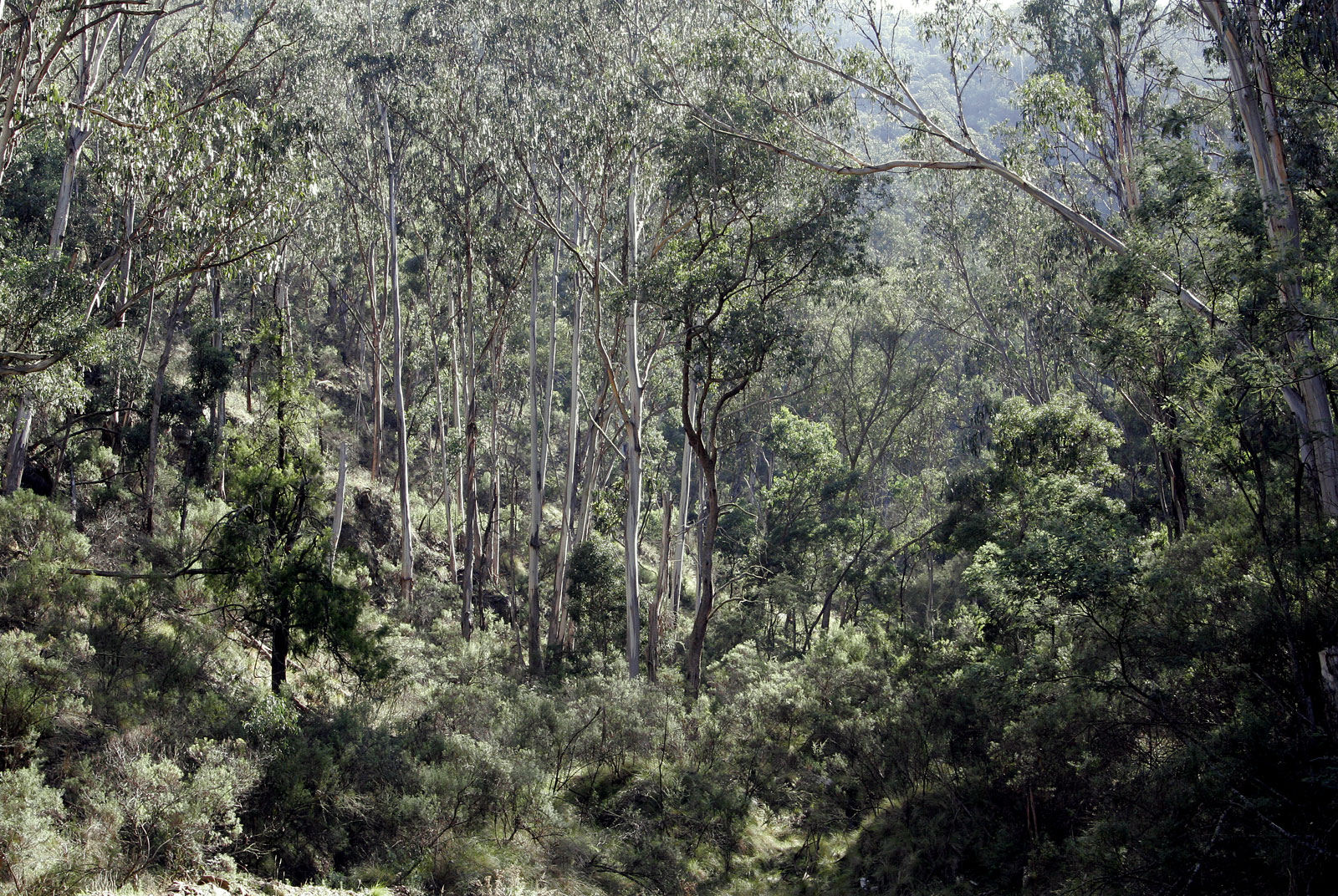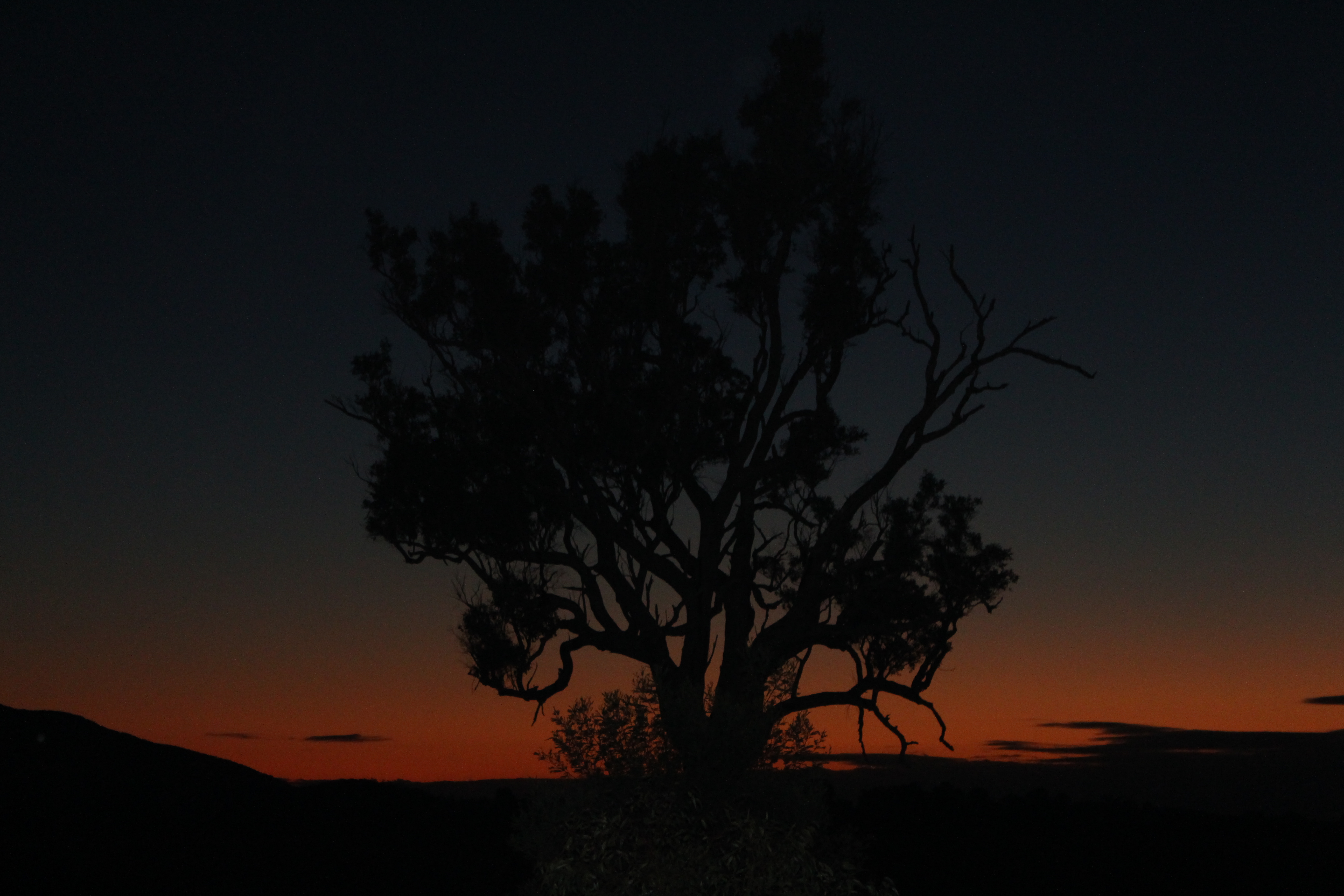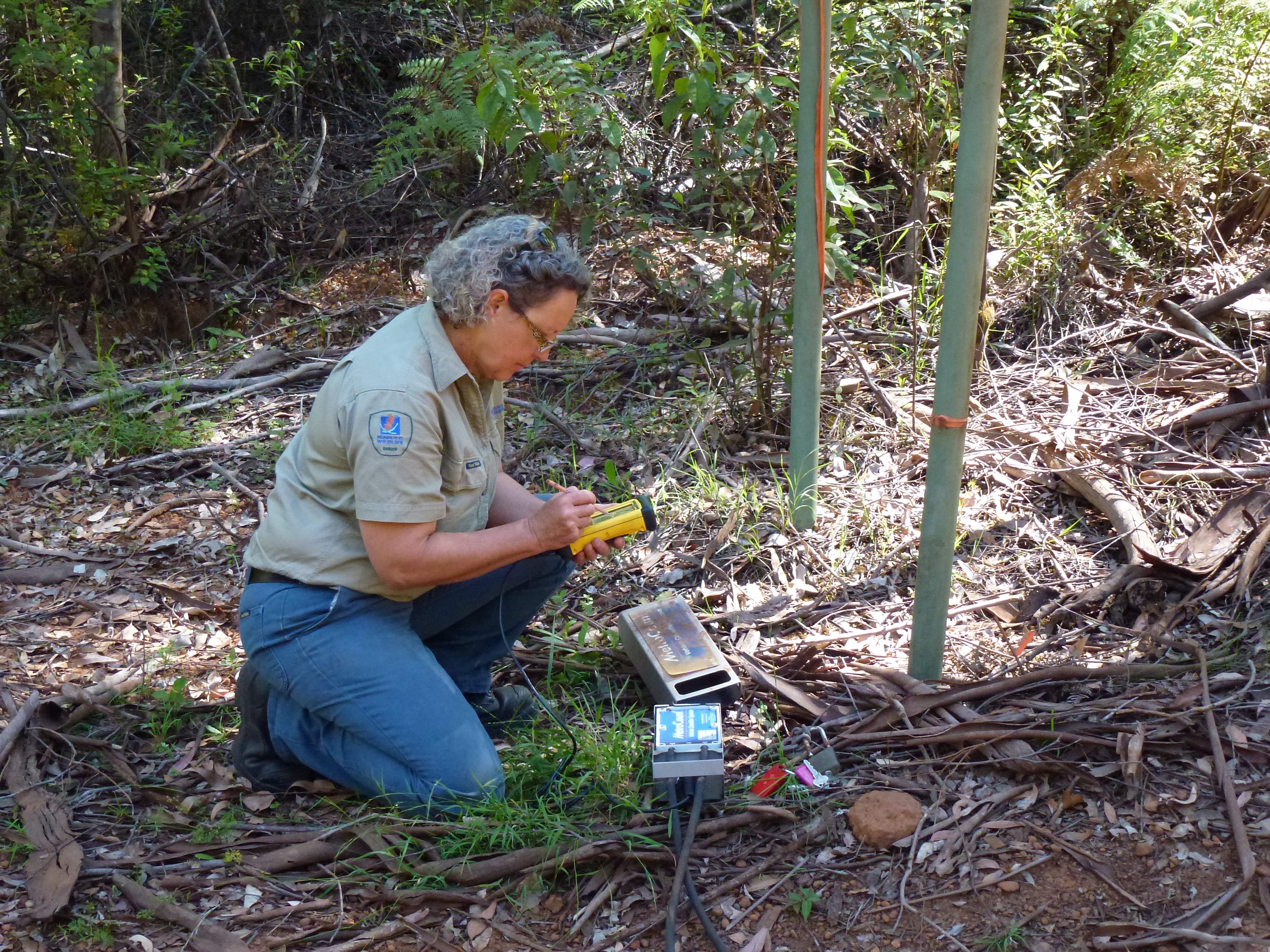|
Eucalyptus Arachnaea
''Eucalyptus arachnaea'', commonly known as the black-stemmed mallee, is a mallee or tree that is endemic to Western Australia. It has rough, stringy bark, lance-shaped leaves and white flowers in groups of up to thirteen. Description ''Eucalyptus arachnaea'' is a mallee that grows to a height of or a tree to . It has rough, stringy, dark grey to greyish black bark. Young plants have more or less triangular to broad, lance-shaped leaves long and wide. Adult leaves are lance-shaped, up to long and wide. The flowers are white to cream-coloured and are arranged in groups of up to thirteen on a peduncle up to long. The flower buds are spindle shaped, long and wide with a horn shaped operculum. The fruit is a short cylinder shape, up to long and wide. Flowering occurs mainly from April to May. Taxonomy and naming The black-stemmed mallee was first formally described in 1867 by George Bentham who gave it the name ''Eucalyptus redunca'' var. ''melanophloia'' and publish ... [...More Info...] [...Related Items...] OR: [Wikipedia] [Google] [Baidu] |
Walebing, Western Australia
Walebing is a small town in the wheatbelt region of Western Australia, in the Shire of Moora, it takes its name from the original homestead established by Anthony O'Grady Lefroy in the 1840s. Notable people * Ben Cuimermara Taylor Benedict "Ben" Taylor AM, also known as Cuimara (born 15 October 1938) is a Noongar elder from the south-west of Western Australia. Taylor is a well-known Indigenous activist. Early life Taylor grew up in Walebing, near New Norcia. His moth ..., indigenous activist and Noongar elder References Towns in Western Australia Wheatbelt (Western Australia) {{WesternAustralia-geo-stub ... [...More Info...] [...Related Items...] OR: [Wikipedia] [Google] [Baidu] |
Mid West (Western Australia)
The Mid West region is one of the nine regions of Western Australia. It is a sparsely populated region extending from the west coast of Western Australia, about north and south of its administrative centre of Geraldton and inland to east of Wiluna in the Gibson Desert. It has a total area of , and a permanent population of about 52,000 people, more than half of those in Geraldton. Earlier names The western portion of this region was known earlier as "The Murchison" based on the river of the same name, and the similarly named Goldfield. Economy The Mid West region has a diversified economy that varies with the geography and climate. Near the coast, annual rainfall of between allows intensive agriculture. Further inland, annual rainfall decreases to less than , and here the economy is dominated by mining of iron ore, gold, nickel and other mineral resources. Geraldton is an important hub for the tourism industry. The Mid West also has the highest value fishing indu ... [...More Info...] [...Related Items...] OR: [Wikipedia] [Google] [Baidu] |
Eucalyptus
''Eucalyptus'' () is a genus of over seven hundred species of Flowering plant, flowering trees, shrubs or Mallee (habit), mallees in the Myrtaceae, myrtle Family (biology), family, Myrtaceae. Along with several other genera in the Tribe (biology), tribe Eucalypteae, including ''Corymbia'', they are commonly known as eucalypts. Plants in the genus ''Eucalyptus'' have bark that is either smooth, fibrous, hard or stringy, leaves with oil Gland (botany), glands, and sepals and petals that are fused to form a "cap" or Operculum (botany), operculum over the stamens. The fruit is a woody Capsule (botany), capsule commonly referred to as a "gumnut". Most species of ''Eucalyptus'' are Indigenous (ecology), native to Australia, and every state and territory has representative species. About three-quarters of Australian forests are eucalypt forests. Wildfire is a feature of the Australian landscape and many eucalypt species are adapted to fire, and resprout after fire or have seeds which sur ... [...More Info...] [...Related Items...] OR: [Wikipedia] [Google] [Baidu] |
Trees Of Australia
The flora of Australia comprises a vast assemblage of plant species estimated to over 30,000 vascular and 14,000 non-vascular plants, 250,000 species of fungi and over 3,000 lichens. The flora has strong affinities with the flora of Gondwana, and below the family level has a highly endemic angiosperm flora whose diversity was shaped by the effects of continental drift and climate change since the Cretaceous. Prominent features of the Australian flora are adaptations to aridity and fire which include scleromorphy and serotiny. These adaptations are common in species from the large and well-known families Proteaceae (''Banksia''), Myrtaceae (''Eucalyptus'' - gum trees), and Fabaceae (''Acacia'' - wattle). The arrival of humans around 50,000 years ago and the settlement by Europeans from 1788, has had a significant impact on the flora. The use of fire-stick farming by Aboriginal people led to significant changes in the distribution of plant species over time, and the large ... [...More Info...] [...Related Items...] OR: [Wikipedia] [Google] [Baidu] |
Eucalypts Of Western Australia
Eucalypt is a descriptive name for woody plants with capsule fruiting bodies belonging to seven closely related genera (of the tribe Eucalypteae) found across Australasia: ''Eucalyptus'', ''Corymbia'', ''Angophora'', '' Stockwellia'', '' Allosyncarpia'', '' Eucalyptopsis'' and ''Arillastrum''. Taxonomy For an example of changing historical perspectives, in 1991, largely genetic evidence indicated that some prominent ''Eucalyptus'' species were actually more closely related to ''Angophora'' than to other eucalypts; they were accordingly split off into the new genus ''Corymbia''. Although separate, all of these genera and their species are allied and it remains the standard to refer to the members of all seven genera ''Angophora'', ''Corymbia'', ''Eucalyptus'', ''Stockwellia'', ''Allosyncarpia'', ''Eucalyptopsis'' and ''Arillastrum'' as "eucalypts" or as the eucalypt group. The extant genera ''Stockwellia'', ''Allosyncarpia'', ''Eucalyptopsis'' and ''Arillastrum'' comprise six ... [...More Info...] [...Related Items...] OR: [Wikipedia] [Google] [Baidu] |
List Of Eucalyptus Species
The following is an alphabetical list of ''Eucalyptus'' species accepted by the Australian Plant Census as at February 2019. Several species only occurring outside Australia, including '' E. orophila'', '' E. urophylla'' and '' E. wetarensis'' are listed at the World Checklist of Selected Plant Families. A * '' Eucalyptus abdita'' Brooker & Hopper * ''Eucalyptus absita'' Grayling & Brooker – Badgingarra box * '' Eucalyptus acaciiformis'' H.Deane & Maiden – wattle-leaved peppermint * ''Eucalyptus accedens'' W.Fitzg. – powderbark wandoo * '' Eucalyptus acies'' Brooker – Woolburnup mallee * ''Eucalyptus acmenoides'' Schauer in W.G.Walpers – white mahogany * '' Eucalyptus acroleuca'' L.A.S.Johnson & K.D.Hill – Lakefield coolibah * '' Eucalyptus adesmophloia'' (Brooker & Hopper) D.Nicolle & M.E.French * '' Eucalyptus aequioperta'' Brooker & Hopper – Welcome Hill gum * ''Eucalyptus agglomerata'' Maiden – blue-leaved stringybark * ''Eucalyptus aggregata'' H.Deane & Ma ... [...More Info...] [...Related Items...] OR: [Wikipedia] [Google] [Baidu] |
Department Of Parks And Wildlife (Western Australia)
The Department of Parks and Wildlife (DPaW) was the department of the Government of Western Australia responsible for managing lands described in the ''Conservation and Land Management Act 1984'' and implementing the state's conservation and environment legislation and regulations. The minister responsible for the department was the Minister for the Environment (Western Australia), Minister for the Environment. History The Department of Environment and Conservation (Western Australia), Department of Environment and Conservation (DEC) was separated on 30 June 2013, forming the Department of Parks and Wildlife (DPaW) and the Department of Environment Regulation (DER), both of which commenced operations on 1 July 2013. DPaW focused on managing multiple use state forests, national parks, marine parks and reserves. DER focused on environmental regulation, approvals and appeals processes, and pollution prevention. It was announced on 28 April 2017 that the Department of Parks and Wi ... [...More Info...] [...Related Items...] OR: [Wikipedia] [Google] [Baidu] |
Declared Rare And Priority Flora List
The Declared Rare and Priority Flora List is the system by which Western Australia's conservation flora are given a priority. Developed by the Government of Western Australia's Department of Environment and Conservation, it was used extensively within the department, including the Western Australian Herbarium. The herbarium's journal, '' Nuytsia'', which has published over a quarter of the state's conservation taxa, requires a conservation status to be included in all publications of new Western Australian taxa that appear to be rare or endangered. The system defines six levels of priority taxa: ;X: Threatened (Declared Rare Flora) – Presumed Extinct Taxa: These are taxa that are thought to be extinct, either because they have not been collected for over 50 years despite thorough searching, or because all known wild populations have been destroyed. They have been declared as such in accordance with the Wildlife Conservation Act 1950, and are therefore afforded legislative prot ... [...More Info...] [...Related Items...] OR: [Wikipedia] [Google] [Baidu] |
Morawa, Western Australia
Morawa is a town in the Mid West region of Western Australia. It is located within the Shire of Morawa, approximately 370 kilometres (230 mi) north of the state capital Perth, on the railway line between Wongan Hills and Mullewa. History The name ''Morawa'' is an Indigenous Australian name; it probably derives from the ''Morowar'', the local dialect's word for the dalgite. The name was first used on maps of the area in 1910, in reference to a rock hole. When the railway was being planned in 1913, it was decided to locate a siding at the location, and the name ''Morawa'' was chosen for it. The Lands Department then decided to establish a townsite there, and Morawa was gazetted in September 1913. In 1921 the Railways Department decided that ''Morawa'' was too similar to ''Mullewa'' and requested a name change. In response, the town's name was changed to ''Merkanooka'' in January 1922. However the Railway Department, which had pressed for the name change in the first pla ... [...More Info...] [...Related Items...] OR: [Wikipedia] [Google] [Baidu] |
Type (biology)
In biology, a type is a particular wiktionary:en:specimen, specimen (or in some cases a group of specimens) of an organism to which the scientific name of that organism is formally attached. In other words, a type is an example that serves to anchor or centralizes the defining features of that particular taxon. In older usage (pre-1900 in botany), a type was a taxon rather than a specimen. A taxon is a scientifically named grouping of organisms with other like organisms, a set (mathematics), set that includes some organisms and excludes others, based on a detailed published description (for example a species description) and on the provision of type material, which is usually available to scientists for examination in a major museum research collection, or similar institution. Type specimen According to a precise set of rules laid down in the International Code of Zoological Nomenclature (ICZN) and the International Code of Nomenclature for algae, fungi, and plants (ICN), the ... [...More Info...] [...Related Items...] OR: [Wikipedia] [Google] [Baidu] |
Laterite
Laterite is both a soil and a rock type rich in iron and aluminium and is commonly considered to have formed in hot and wet tropical areas. Nearly all laterites are of rusty-red coloration, because of high iron oxide content. They develop by intensive and prolonged weathering of the underlying parent rock, usually when there are conditions of high temperatures and heavy rainfall with alternate wet and dry periods. Tropical weathering (''laterization'') is a prolonged process of chemical weathering which produces a wide variety in the thickness, grade, chemistry and ore mineralogy of the resulting soils. The majority of the land area containing laterites is between the tropics of Tropic of Cancer, Cancer and Tropic of Capricorn, Capricorn. Laterite has commonly been referred to as a soil type as well as being a rock type. This and further variation in the modes of conceptualizing about laterite (e.g. also as a complete weathering profile or theory about weathering) has led to c ... [...More Info...] [...Related Items...] OR: [Wikipedia] [Google] [Baidu] |
Granite
Granite () is a coarse-grained ( phaneritic) intrusive igneous rock composed mostly of quartz, alkali feldspar, and plagioclase. It forms from magma with a high content of silica and alkali metal oxides that slowly cools and solidifies underground. It is common in the continental crust of Earth, where it is found in igneous intrusions. These range in size from dikes only a few centimeters across to batholiths exposed over hundreds of square kilometers. Granite is typical of a larger family of ''granitic rocks'', or '' granitoids'', that are composed mostly of coarse-grained quartz and feldspars in varying proportions. These rocks are classified by the relative percentages of quartz, alkali feldspar, and plagioclase (the QAPF classification), with true granite representing granitic rocks rich in quartz and alkali feldspar. Most granitic rocks also contain mica or amphibole minerals, though a few (known as leucogranites) contain almost no dark minerals. Granite is ... [...More Info...] [...Related Items...] OR: [Wikipedia] [Google] [Baidu] |




.jpg)

